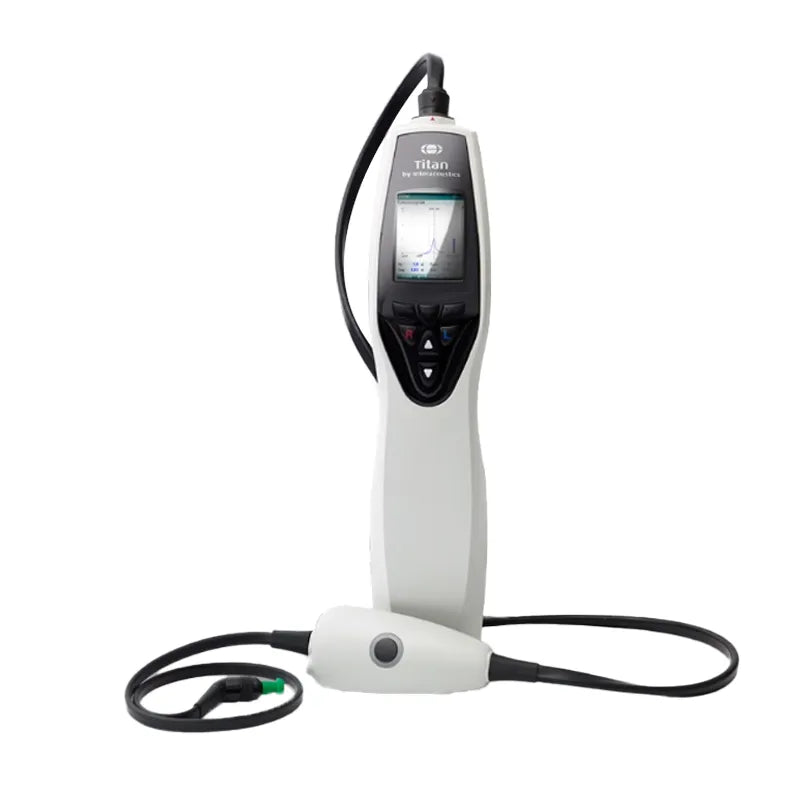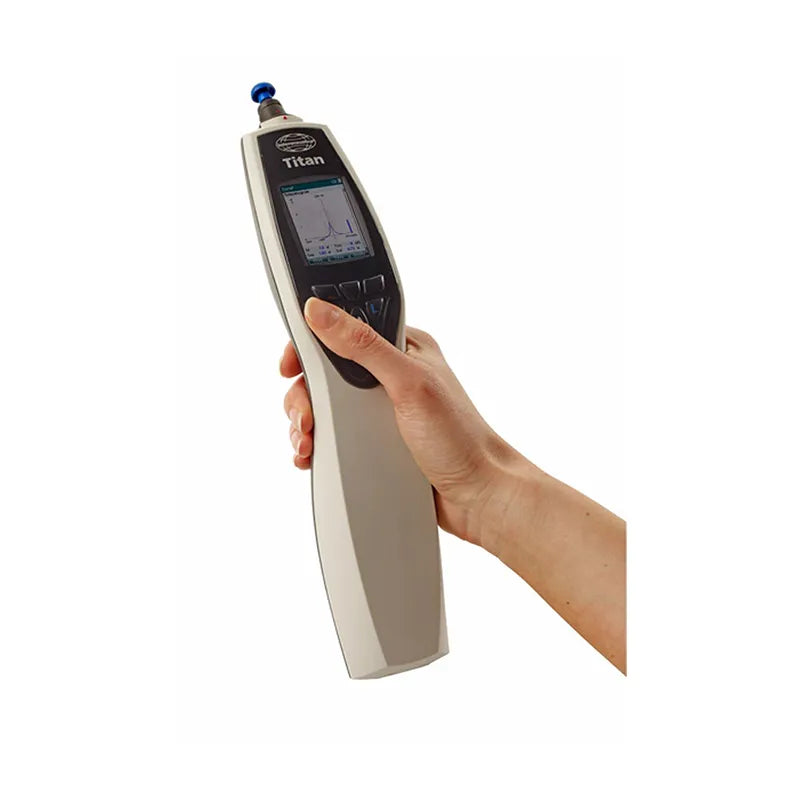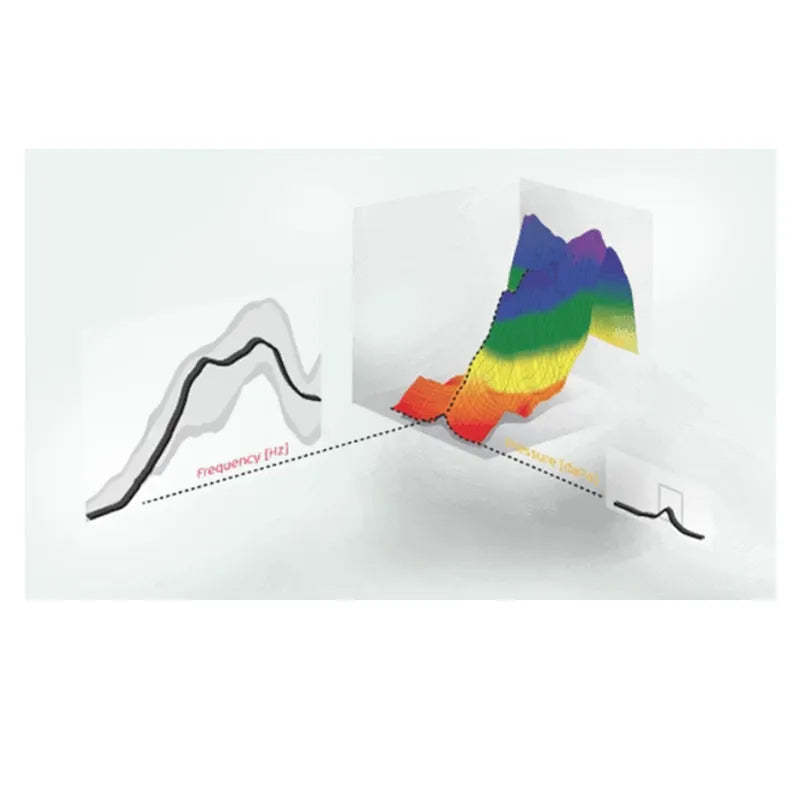Interacoustics Titan Tympanometer with Screening Impedance
Interacoustics Titan Tympanometer with Screening Impedance may not be in stock. Please call us for ETA before purchasing.
Couldn't load pickup availability
Warranty Information
Warranty Information
Device - 2 Years. Accessories - 90 days.
Customise your Titan for screening, diagnostic and advanced clinical testing. Match the modules with your current needs and upgrade when your challenges change.
The titan delivers Impedance, ABRIS, OAE and the revolutionary Wideband Tympanometry.
Built for the Future
The Titan is a modular platform designed to adapt to your clinical needs, combining handheld flexibility with comprehensive testing options. It supports screening, diagnostic, and advanced clinical assessments, all in one compact system. Built with the future in mind, its software modules are designed based on feedback from experts and include the latest technology for lasting value. Features are developed in sync with your changing needs and contain the latest technologies making the Titan a future-safe investment.
A Preview of the Benefits
- High resolution colour display
- Patient-centred testing through multiple probe and transducer configurations
- Handheld and PC mode for full flexibility
- Easy to use even with minimal technical understanding
- Supreme usability through storage of calibration values in probe and ID transducers
Easy Handling
From standard screening to advanced diagnostics, the Titan is created with superior usability in mind. From pre-set protocols to customized settings, you will benefit from intuitive interfaces and a professional design.
Tympanometry
Your multi-tasking business partner: Titan is available in a screening, diagnostic or clinical version. It features standard tympanometry, ipsilateral and contralateral acoustic reflexes, reflex decay and reflex latency, as well as tree Eustachian tube function tests.
Tympanometry through advanced technologies: "endless airflow", pressure control technology, high resolution recordings and an intelligent pump system with an adaptive speed control around the tympanic peak.
Titan comes with:
- Three eustachain tube function tests: intact, perforated and patulous
- Ipsi and contra acoustic reflexes: quick screenings at a single intensity or fast threshold searches
- Reflex decay: Ipsilateral as well as contralateral stimulation
- Reflex latency: Detailed investigation at the onset of the reflex
- Optional high frequency probe tones: (678, 800 and 1000Hz)
- Shoulder unit and probe indicator LED: for ease of use and visual feedback of status
Wideband Tympanometry (WBT)
WBT enhances middle ear diagnostics by providing multiple tympanograms from a single sweep, delivering a comprehensive 3D image of ear function across various frequencies and pressures.
Efficient Multi-Frequency Testing
Quickly assess middle ear performance across different frequencies with just one click, saving time while gaining detailed results.
Enhanced Diagnostics
Combining WBT with OAE or ABR fills diagnostic gaps, improving the identification of conductive issues.
Clear 3D Graphs
Absorbance is displayed in a 3D graph, simplifying diagnostic interpretation with easy-to-read data.
No Extra Skills Needed
WBT is user-friendly and intuitive, with overlaid normative data to assist in differential diagnosis.

Automated ABR in Seconds
Automated ABR Module
The automated ABR module uses the CE-Chirp® stimulus to cut test times by up to 50%. With a clear display, HiTrack compatibility, and customizable protocols, the Titan ensures fast and accurate testing. Simply press "START" after patient setup, and the system delivers a pass/refer result in minimal time, offering 99.9% sensitivity and over 96% specificity.
CE-Chirp® Stimulus Family
This advanced stimulus compensates for cochlear travel time, producing response amplitudes up to twice as large as standard clicks.
DPOAE and TEOAE
| Specifications | ||
| Standards | Safety: | IEC 60601-1: 2005, Internally powered, Type B and BF applied parts |
| EMC: | IEC 60601-1-2: 2014 | |
| Impedance: | IEC 60645-5:2004 /ANSI S3.39, Type 1 | |
| Test Signal: | IEC 60645-1:2012 /ANSI S3.6, IEC 60645-3: 2007 | |
| OAE: | IEC 60645-6:2009, TEOAE Type 1 & 2 Otoacoustic emissions IEC 60645-6:2009, DPOAE Type 2 Otoacoustic emissions | |
| ABR: | IEC 60645-7: 2009, Type 2 | |
| FIPS: | Complaint in accordance with FIPS PUB 140-2 | |
| Cradle | Safety: | IEC 60601-1:2014, Class II |
| Power: | Astrodyne ASA30M-0301 or UE24WCP | |
| Mains voltages and | 100 – 240 VAC, 47 – 63 Hz | |
| frequencies: | ||
| Consumption: | 0.8 – 0.4 A | |
| Battery | Use only: | NP120 or CGA103450 |
| Impedance Measuring System | ||
| Probe tone | Frequency | Classic tympanometry: 226 Hz, 678 Hz, 800 Hz, 1000 Hz; pure tones; AGC controlled to protect for loud probe tone stimuli in small ear canals. WBT: 226 Hz – 8000 Hz broadband stimulus, 21.5/sec. |
| Level | 226 Hz: 85 dB SPL (≈ 69 dB HL) WBT: 96 dB peSPL (infant) / 100 dB peSPL (adult). (100 dB peSPL ≈ 65 dB nHL) | |
| Air pressure | Control: | Automatic |
| Indicator: | Measured value is displayed on the graphical display. | |
| Range: | -600 to +300 daPa | |
| Pressure limitation: | -750 daPa and +550 daPa. | |
| Pressure change rate: | Minimum, medium, maximum or automatic with minimum speed at compliance peak. Selectable in the setup. | |
| Compliance | Range: | 0.1 to 8.0 ml at 226 Hz probe tone (Ear volume: 0.1 to 8.0 ml) and 0.1 to 15 mmho at 678, 800 and 1000 Hz probe tone. |
| Test types | Tympanometry | Automatic, where the start and stop pressure can be user-programmed in the setup function. Manual control of all functions. |
| Eustachian tube function 1 – Non perforated eardrum | Williams test | |
| Eustachian tube function 2 – Perforated eardrum | Toynbee test | |
| Eustachian tube function 3 – Patulous Eustachian tube | Continuous sensitive impedance measurement for 30 up to 150 s. | |
| Indicators | Graphical display | Compliance is indicated as ml and pressure as daPa. In PC controlled mode admittance, susceptance and conductance can be printed. Stimulus level is indicated as dB Hearing Level. |
| Memory | Tympanometry | 1 curve per ear per tympanometry test. 3 curves per ear per Eustachian tube function test. And theoretically an infinite number of tests per protocol. |
| Reflex Functions | ||
| Signal sources | Tone - contra, reflex: | 250, 500, 1000, 2000, 3000, 4000, 6000, 8000 Hz |
| Tone - ipsi, reflex: | 500, 1000, 2000, 3000, 4000 Hz | |
| NB noise - contra, reflex: | 250, 500, 1000, 2000, 3000, 4000, 6000, 8000 Hz | |
| NB noise - ipsi, reflex: | 1000, 2000, 3000, 4000 Hz | |
| Noise - contra, reflex: | Wide Band, High Pass, Low Pass | |
| Noise - ipsi, reflex: | Wide Band, High Pass, Low Pass | |
| Stimulus duration: | 750 ms (continuous), 1500 ms (pulsed) | |
| Outputs | Contra earphone: | TDH39 earphone, DD45 earphone or E-A-RTONE 3A/IP30 insert for Reflex measurements. |
| Ipsi earphone: | Probe earphone incorporated in the probe system for Reflex measurements | |
| Air: | Connection of the air system to the probe | |
| Test types | Manual reflex: | Manual control of all functions |
| Automated reflex: | Automatic reflexes: Single intensities, Reflex growth | |
| Reflex decay: | Automatic, 10 dB above threshold and manually controlled with stimulus durations of 10 to 30 s | |
| Reflex latency: | Automated, first 300 ms from stimulus start | |
| ABR Infant Screening | ||
| Preamplifier | One channel | 3 electrodes. 50 cm Switchable: Software will automatically switch mastoid and ground electrodes if the mastoid montage is used. The user does not need to change the electrodes during testing. |
| Gain | 58 dB | |
| Frequency response | 0.5-5000 Hz | |
| Noise | <25 nV/√Hz | |
| CMR ratio | >90 dB | |
| Max input offset voltage | 2.5V | |
| Input impedance | >=10 MΩ/ =< 300 pF | |
| Power from main unit | Isolated power supply | |
| Electrical impedance measurement | Measurement frequency | 33 Hz |
| Waveform | Rectangular | |
| Measurement current | 11.25 μA | |
| Range | 0.5 kΩ – 25 kΩ ± 10% | |
| Stimulus | Stimuli | Click range (200 Hz -11 kHz) CE-Chirp® range (200 Hz – 11 kHz) HiLo CE-Chirp® range (Lo – up to 1.5 kHz) & (Hi – above 1.5 kHz) |
| Stimulus rate | 90 Hz | |
| Transducers: calibrated to standards | E-A-RTONE ABR insert phone E-A-RTONE ABR for EarCup IP30 ABR insert phone IP30 ABR for EarCup TDH 39 or DD45 head phone (Static force: 4,5N ± 0,5N) IOW Probe | |
| Level | 30 dB nHL, 35 dB nHL, 40 dB nHL | |
| Bandwidth | 22.05 kHz | |
| Recording | Analysis time | 1-10 min or residual noise 5-80 nV |
| A/D resolution | 24 bit | |
| Artifact reject system | Rejection level (Peak, Min RMS, Max RMS) & Clipping (Saturation) | |
| Display | Stimulus level and type, transducer, rejection level, electrode impedances, EEG/noise, bar or curve view, test time. | |
| Algorithmic Sensitivity | CE-Chirp®: | 99.90% |
| DPOAE | ||
| Stimulus | Frequency range | 500 to 10000 Hz |
| Nominal frequency | f2 | |
| Frequency step | 1 Hz | |
| Level | 30 to 80 dB SPL (75 dB SPL for 6kHz and 65 dB SPL for 8kHz to 10kHz) | |
| Level step | 1 dB | |
| Transducer | ||
| Recording | Analysis time | 1 second to unlimited time |
| A/D Resolution | 24 bit, 5.38 Hz resolution | |
| Artifact rejection system | -30 to +30 dB SPL or off | |
| Stimulus tolerance | Adjustable between 1 and 10 dB | |
| SNR criteria | Adjustable between 3 and 25 dB | |
| DP criteria: | SNR, Min DP level, DP tolerance, Residual noise, mandatory points, DP reliability | |
| Probe check window | 256 points frequency response of the ear canal due to a click stimulus. | |
| DP-response window | 4096 points frequency response | |
| Averaging method | Bayesian weighted averaging | |
| Residual noise | An RMS average measurement in the DP-bin frequency area (26 bins at frequencies < 2500 Hz & 60 bins ≥ 2500 Hz). | |
| Display | Other information | In ear status (before/after test), noise rejection level, tympanic peak pressure |
| Basic or advanced view of the DP-Gram, test summary table, point summary table | ||
| Probe specifications | Titan IOWA probe | Clinical extension cable with fixed IOWA probe. Auto detection and auto calibrated. IMP, DPOAE and TEOAE capable |
| Replaceable probe tip | ||
| Test pressure | Ambient pressure Tympanic peak pressure (from IMP module) | |
Additional specifications can be found on the user manual.
Payment & Security
Payment methods
Your payment information is processed securely. We do not store credit card details nor have access to your credit card information.









